11 Incredible Snorkeling Spots Few Know About And 4 That Aren’t Worth The Dive
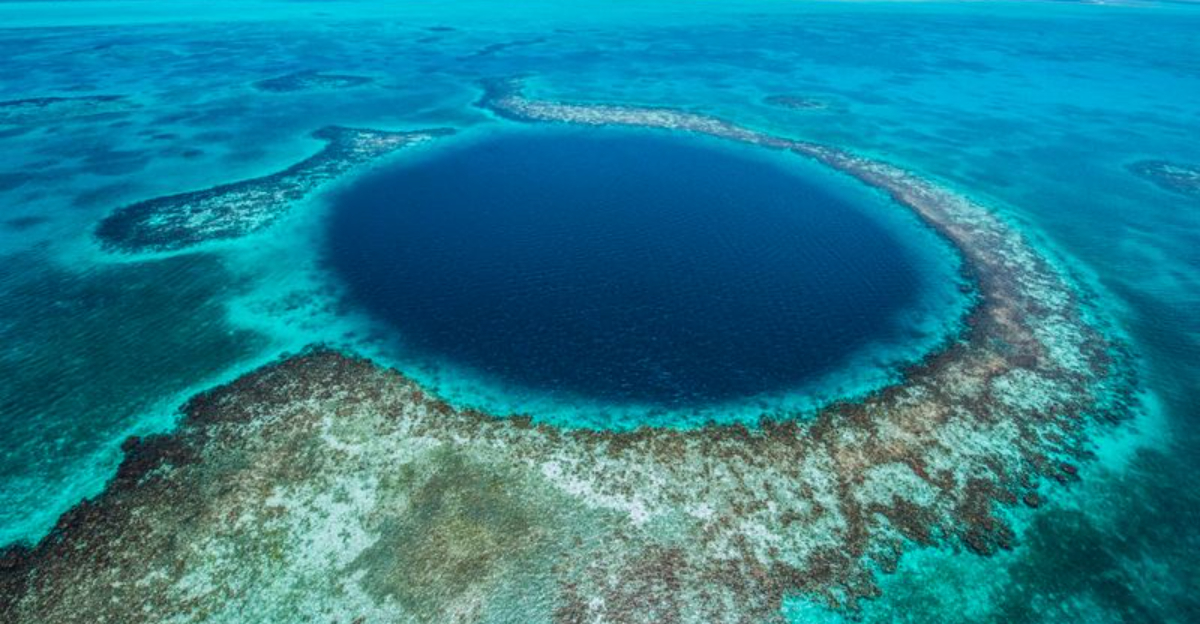
Snorkeling should feel like slipping into another world—one filled with colorful coral, curious fish, and total serenity. But let’s be honest, not every so-called “snorkeling paradise” delivers. I’ve swum in waters that looked dreamy in photos but were murky, overrun, or just plain dull.
That’s why I’ve put together a list that separates the real underwater treasures from the overhyped disappointments.
Ready to discover the spots that are truly worth your mask and fins—and a few that might leave you high and dry?
1. Dean’s Blue Hole, Bahamas
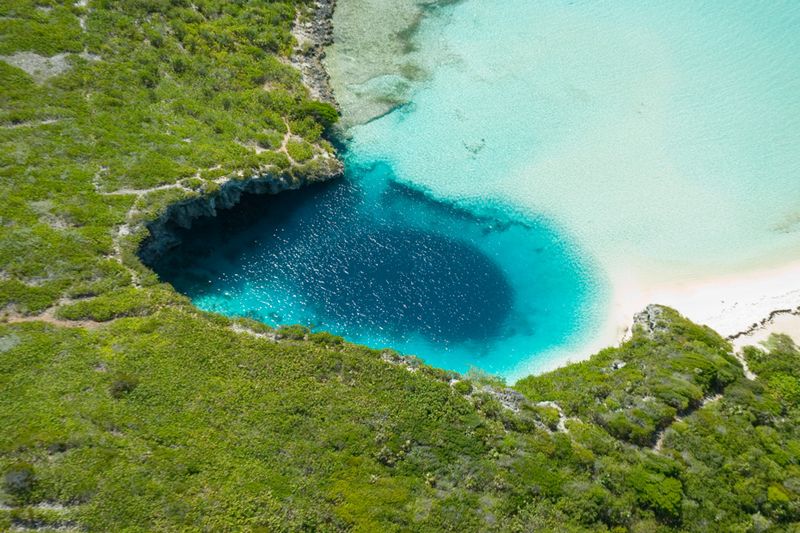
When you peer into this massive circular void, you’ll witness one of Earth’s most stunning natural formations. Dean’s Blue Hole plunges 663 feet deep, creating an otherworldly snorkeling experience that few travelers discover.
The contrast between the deep sapphire center and surrounding turquoise shallows creates perfect conditions for beginners and experts alike. Schools of tropical fish dance around the rim while deeper waters hold mysterious creatures.
Getting there requires a short boat ride from Long Island, but the journey rewards you with pristine waters and virtually no crowds. Pack your underwater camera because this geological wonder offers photo opportunities you’ll treasure forever.
2. Silfra Fissure, Iceland
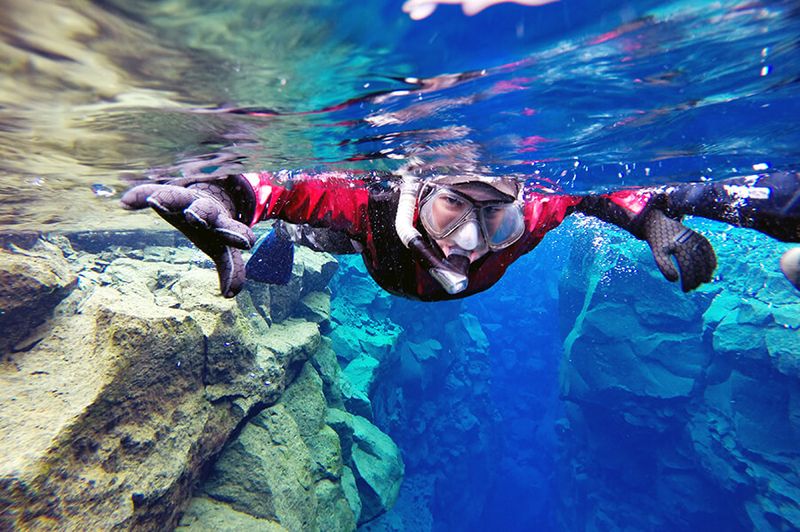
How often can you snorkel between two continental plates? Silfra Fissure offers this rare geological experience where North American and Eurasian tectonic plates meet in Thingvellir National Park.
The water here achieves legendary clarity, with visibility extending over 300 feet through glacial meltwater filtered through lava rock for decades. Though you’ll need a dry suit due to near-freezing temperatures, the ethereal underwater landscape justifies every shiver.
Floating through this narrow canyon feels like drifting through liquid crystal, with dramatic rock formations creating an almost alien environment. Book with certified operators who provide proper equipment and safety briefings for this unique Arctic snorkeling adventure.
3. Jellyfish Lake, Palau
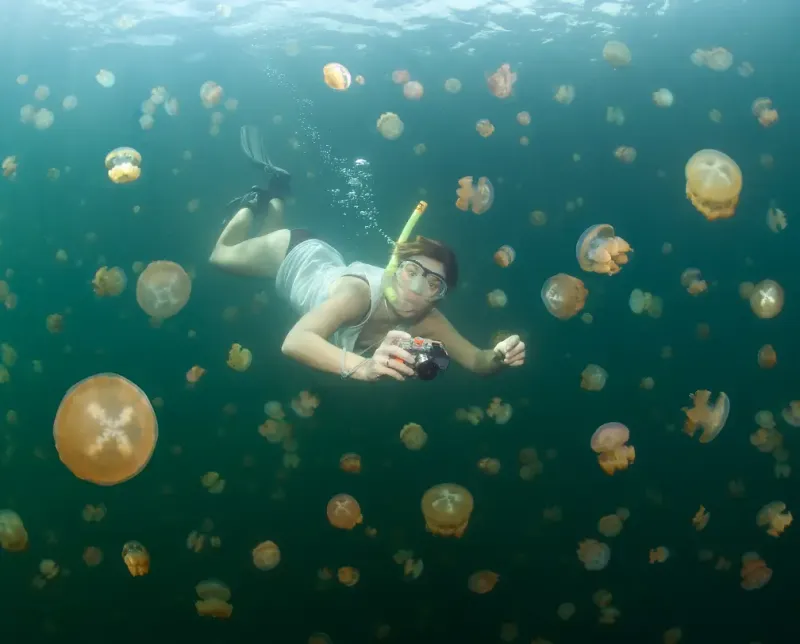
Swimming among millions of harmless jellyfish creates an surreal experience that feels more like floating through a living snow globe. These golden beauties lost their sting over thousands of years, making close encounters completely safe.
The lake formed when rising seas trapped jellyfish in this marine sanctuary, where they evolved without predators. Now they migrate across the lake daily, following the sun’s path for optimal nutrition from their symbiotic algae.
Access requires permits and guided tours, but witnessing this biological phenomenon ranks among snorkeling’s most magical moments. The jellyfish pulse gently around you, creating an almost meditative underwater ballet that photographers and nature lovers find absolutely mesmerizing.
4. Champagne Reef, Dominica

Volcanic activity beneath this reef creates thousands of tiny bubbles that tickle your skin like champagne, hence the playful name. The geothermal vents add warmth to the water while creating a unique sensory snorkeling experience.
Healthy coral formations thrive in these mineral-rich waters, supporting diverse marine life including parrotfish, angelfish, and occasional sea turtles. The bubbling effect provides excellent photo opportunities as streams of silver bubbles rise toward the surface.
Located on Dominica’s west coast, this spot remains relatively unknown to mainstream tourism. Local dive shops offer equipment rentals and can guide you to the best bubble zones where the underwater champagne effect creates the most dramatic visual impact.
5. Cenote Dos Ojos, Mexico
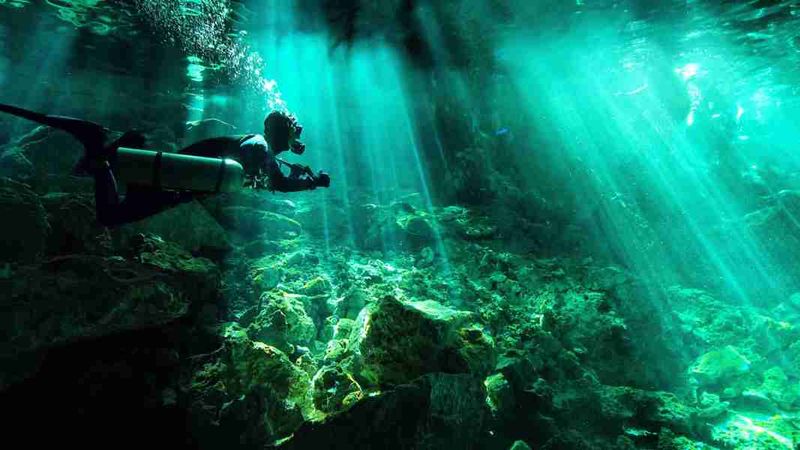
These freshwater sinkholes offer a completely different snorkeling experience from ocean reefs, with crystal-clear water revealing intricate limestone formations and ancient stalactites. The name means ‘Two Eyes’ referring to the connected circular pools.
Sunlight streams through openings in the cave ceiling, creating cathedral-like beams that illuminate the underwater landscape. The water maintains a constant comfortable temperature year-round, making extended snorkeling sessions enjoyable.
Located near Tulum, this cenote system attracts fewer visitors than nearby ocean spots, providing peaceful exploration opportunities. Rent equipment from local operators who understand the unique conditions and can recommend the best entry points for optimal visibility and safety.
6. Apo Island, Philippines
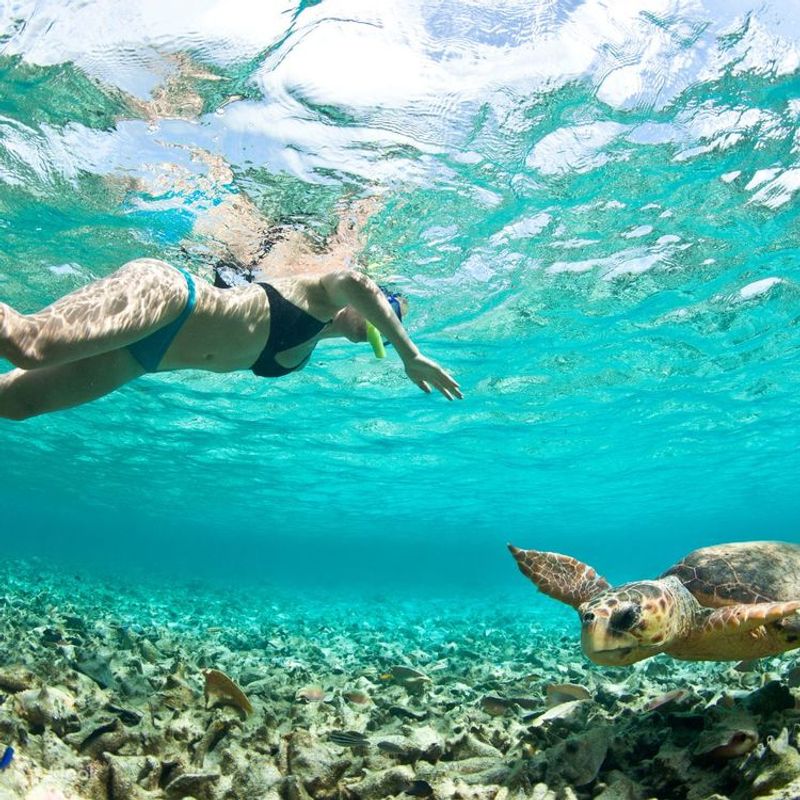
Marine protection efforts have transformed this small volcanic island into one of the Philippines’ most successful conservation stories. Strict fishing regulations allow coral reefs and marine life to flourish in ways rarely seen elsewhere.
Sea turtles glide gracefully through the water while schools of colorful reef fish create living rainbows around pristine coral formations. The community-based conservation model ensures sustainable tourism while protecting this underwater paradise.
Getting there requires a boat trip from Dumaguete, but the journey rewards you with some of Southeast Asia’s healthiest reefs. Local guides share conservation success stories while leading you to the best snorkeling spots around the island’s protected waters.
7. Molokini Crater, Hawaii

This crescent-shaped volcanic crater creates a natural sanctuary where marine life thrives in protected waters. The unique formation blocks waves and currents, providing calm conditions perfect for snorkeling year-round.
Over 250 fish species call these waters home, including endemic Hawaiian species found nowhere else on Earth. The crater’s back wall drops dramatically into deep ocean, attracting larger pelagic species that occasionally visit the shallows.
Though boat tours operate daily from Maui, early morning trips offer the best visibility and fewer crowds. The combination of easy access, excellent conditions, and diverse marine life makes this partially submerged crater a snorkeling destination that consistently delivers unforgettable experiences.
8. Blue Corner, Palau

Strong currents at this underwater promontory create a feeding station for large marine animals, offering snorkelers glimpses of sharks, rays, and massive fish schools. The dramatic underwater topography drops from shallow reef to deep ocean.
Experienced snorkelers use reef hooks to maintain position in the current while observing the marine action. Gray reef sharks patrol the drop-off while schools of barracuda and jacks create silvery tornadoes in the blue water.
This site demands respect for ocean conditions and proper preparation, but rewards adventurous snorkelers with world-class marine encounters. Local operators provide necessary equipment and safety briefings to help you experience this legendary Pacific diving and snorkeling destination safely.
9. Ningaloo Reef, Australia
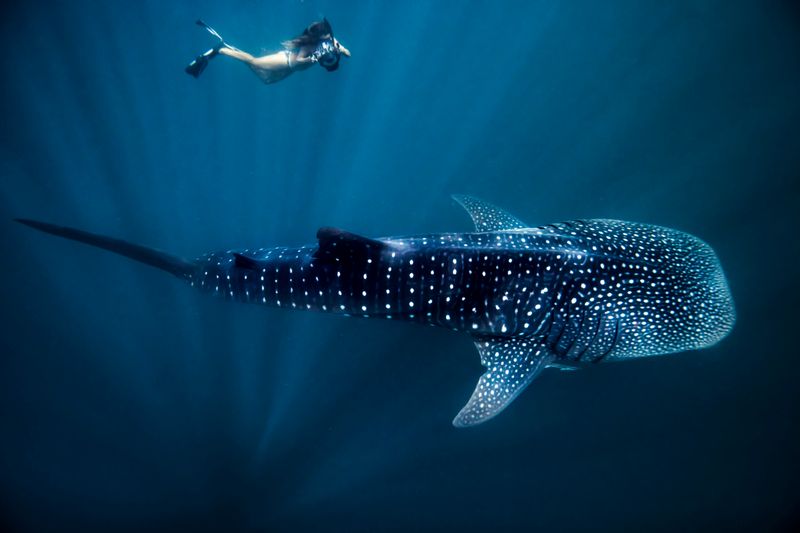
Australia’s lesser-known reef offers whale shark encounters that rival any destination worldwide, yet receives a fraction of Great Barrier Reef’s visitors. These gentle giants visit predictably during certain seasons, creating reliable wildlife viewing opportunities.
The reef stretches along Western Australia’s coast, providing diverse snorkeling experiences from coral gardens to pelagic encounters. Manta rays, dolphins, and sea turtles frequent these waters alongside the famous whale sharks.
Accessing Ningaloo requires travel to remote Exmouth, but this isolation preserves the reef’s pristine condition. Tour operators offer whale shark swimming experiences with strict guidelines that protect both animals and snorkelers while ensuring ethical wildlife encounters.
10. Cabo Pulmo, Mexico
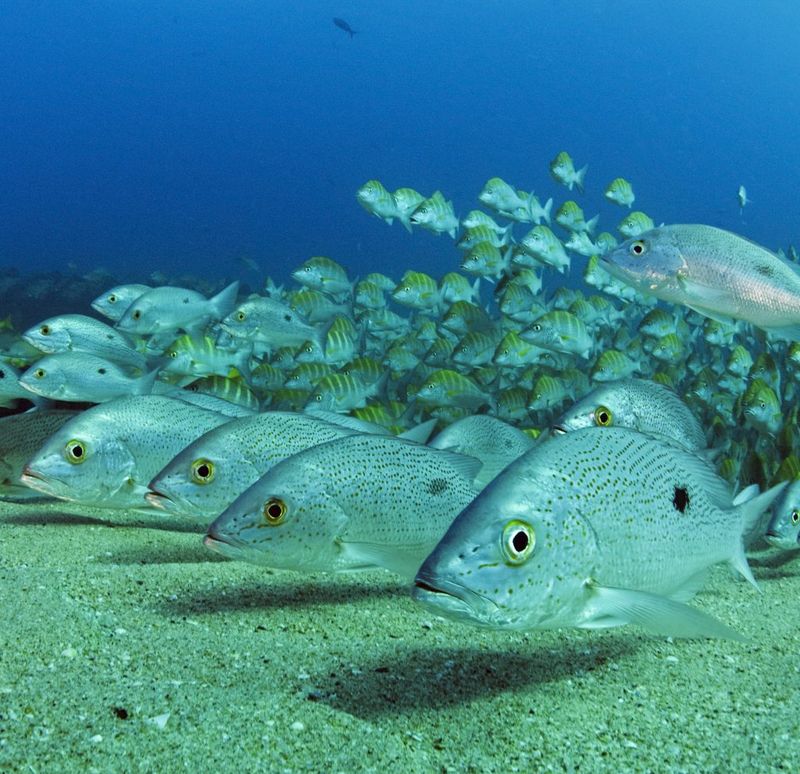
Marine protection transformed this former fishing village into one of the world’s most successful reef recovery stories. Decades of conservation have restored coral coverage and fish populations to levels that amaze marine biologists.
Massive schools of jacks, snappers, and other fish create underwater tornadoes while sea lions playfully interact with snorkelers. The diversity of marine life in this Sea of Cortez location rivals destinations with much higher profiles.
Local families who once fished these waters now guide visitors through their protected marine park, sharing conservation success stories. The community-based tourism model ensures that reef protection continues while providing sustainable income for local residents through snorkeling and diving tours.
11. Maldives Local Islands
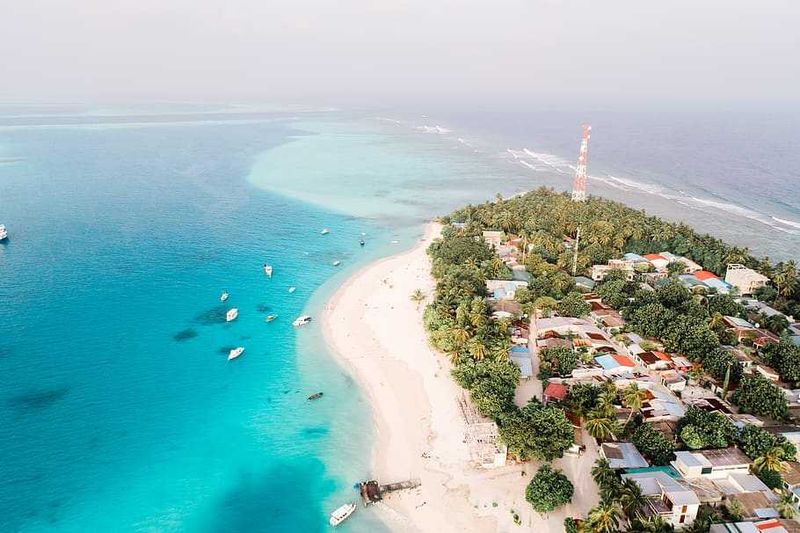
Bypassing expensive resorts for local island stays reveals the Maldives’ authentic culture while accessing the same pristine reefs at fraction of the cost. Local islands offer house reefs just steps from guesthouses and beaches.
These community-based tourism initiatives allow visitors to experience Maldivian life while snorkeling world-class reefs. Local guides share traditional fishing knowledge and reef conservation efforts while leading snorkeling excursions to nearby coral gardens.
Islands like Maafushi and Thulusdhoo provide budget-friendly access to Maldivian waters without resort price tags. The cultural exchange enriches the travel experience while your tourism dollars directly benefit local communities rather than international resort chains.
12. Hanauma Bay, Hawaii (Overrated)
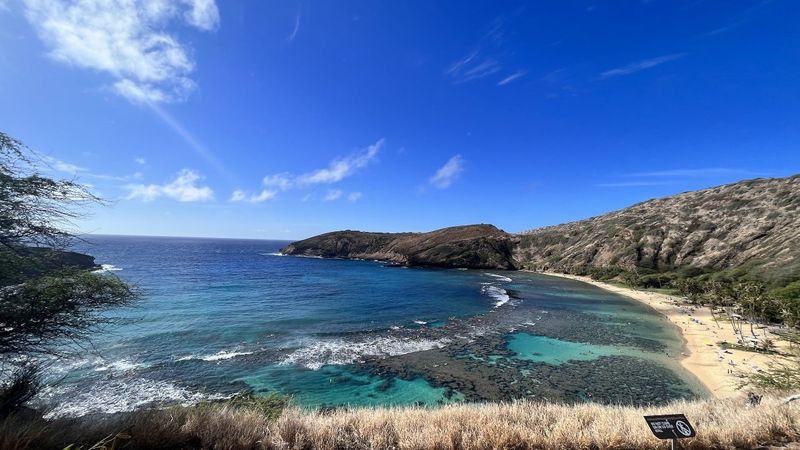
Tourism has severely damaged what was once Oahu’s premier snorkeling destination, turning a natural wonder into an overcrowded disappointment. Daily visitor limits can’t undo decades of reef damage from sunscreen chemicals and trampling.
The famous circular bay now offers limited marine life viewing compared to its reputation, with bleached coral and murky water from constant human activity. Entry fees and mandatory educational videos add time and expense without improving the underwater experience.
Better snorkeling exists at less famous Oahu locations where reefs remain healthier and crowds smaller. Save your money and time for spots like Shark’s Cove or Keeaumoku, where you’ll find better visibility, healthier marine ecosystems, and more authentic Hawaiian snorkeling experiences.
13. Stingray City, Cayman Islands (Overrated)

This heavily commercialized attraction has transformed wild stingrays into dependent animals that no longer exhibit natural behaviors. Constant feeding by tourists has created an artificial ecosystem that prioritizes entertainment over conservation.
Dozens of tour boats arrive simultaneously, creating chaotic conditions where hundreds of people compete for stingray interactions in shallow water. The experience feels more like a theme park than authentic marine wildlife viewing.
Better stingray encounters exist at less developed locations throughout the Caribbean, where these graceful creatures maintain natural behaviors in pristine environments. Choose operators who prioritize wildlife welfare over tourist volume for more meaningful and educational marine animal interactions.
14. Blue Hole, Belize (Overrated)
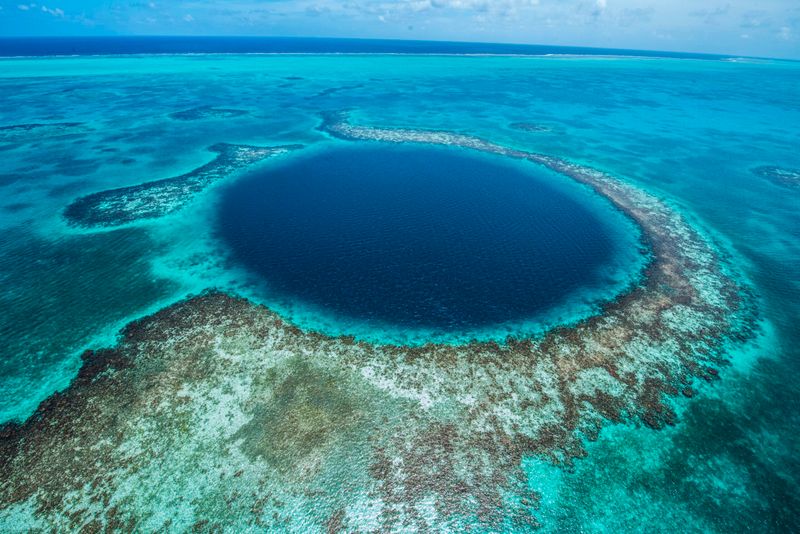
Despite its Instagram fame, this geological formation offers disappointing snorkeling with limited marine life and poor visibility. The depth that creates the dramatic blue color also means most interesting features lie far below snorkeling range.
The circular sinkhole’s walls drop quickly into darkness, leaving snorkelers floating over empty blue water with little to observe. Marine life concentrates around the rim’s shallow areas, but these spots offer nothing special compared to nearby reef systems.
Better snorkeling exists at Belize’s barrier reef locations, where healthy coral systems support diverse marine communities in shallow, clear water. Save the expensive Blue Hole trip for experienced divers who can appreciate its deep-water features, and choose reef snorkeling for better underwater experiences.
15. Phi Phi Islands, Thailand (Overrated)

Mass tourism has destroyed much of what made these islands special, with damaged reefs, polluted water, and overwhelming crowds creating subpar snorkeling conditions. Daily boat traffic and inadequate waste management have degraded marine ecosystems.
Popular snorkeling spots like Maya Bay struggle with coral bleaching and reduced fish populations due to constant human pressure. The water often appears murky from boat traffic and lacks the clarity needed for quality underwater viewing.
Thailand offers superior snorkeling at less developed islands like Koh Lipe or Koh Tao, where marine protection efforts maintain healthier reefs and clearer water. Skip the Phi Phi tourist trap and explore destinations where conservation efforts preserve authentic Thai marine environments for future generations.
